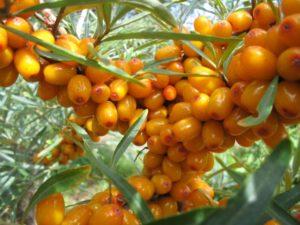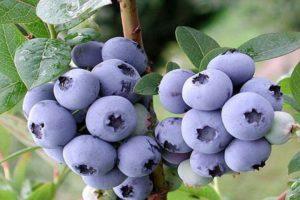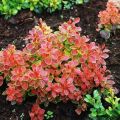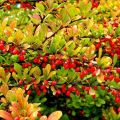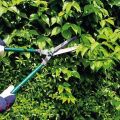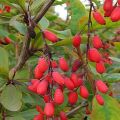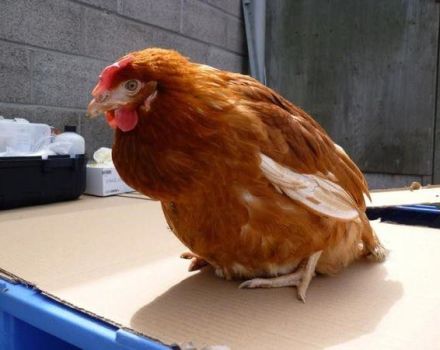How to get rid of diseases and pests of barberry, what to do to combat them
The barberry shrub is planted for landscaping the territory, forming natural green barriers and decorating alpine slides. In addition, the fruits of the bush are attractive, which remain so during the winter. Despite the gardener's efforts and preventive measures, the bushes are affected by diseases, they are overcome by various harmful insects. Symptoms of barberry diseases are different: deformation of the bark, violation of the structure of the stem, leaf plates and shoots.
The main diseases of barberry and treatment methods
Barberry plants are considered to be relatively disease resistant. Diseases affecting plants are cancerous or fungal in nature. With appropriate therapeutic measures, the plant is restored.
Leaf rust
The fungus provokes the development of the disease, which develops due to a decrease in the protective functions of the plant. If the shrub does not receive the necessary useful elements, it weakens. Damage symptoms:
- orange-brown spots on leaf plates, shoots;
- on the lower surface of the leaf plate, myceliums of whitish color and round shape are visible.
You can get rid of it by spraying with sulfur-containing preparations. Bordeaux liquid is ideal. All foliage affected by the disease must be burned.
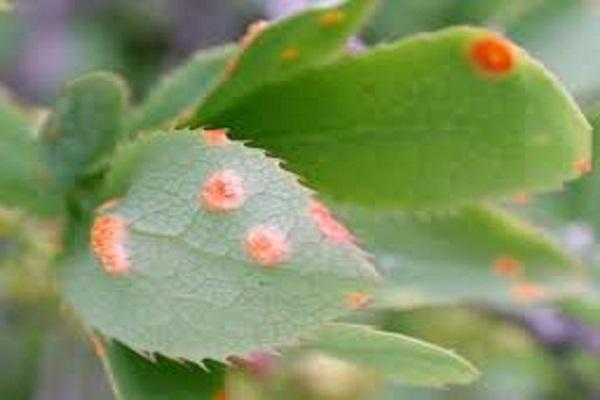
Leaf spot
The lesion is characterized by the appearance of white (with a grayish tint), brownish, brownish and black spots. Each genus of spotting produces a different parasite. Poor-quality processing or at the wrong time leads to the death of the shrub.
What to do if these signs are found? Chemicals and biological fungicides effectively cope. Fruiting shrubs need more loyal products, which are sprayed a couple of weeks before picking berries.
Powdery mildew
The fungus provokes the disease. When the leaves are covered with white bloom, it begins to dry out the plant. In case of severe damage, the foliage twists and becomes covered with a net of cobwebs.
For the treatment of shrubs, it is necessary to use complex measures:
- processing with a solution of soda ash and soap;
- in case of severe damage, treat with a manganese solution;
- foliage needs to be burned;
- process the bush until the flowers appear with the chemical agent Vectra, Skor, gray colloidal.
In case of severe damage, treat with Fitosporin.Also, for preventive purposes, you can make a seasonal spraying.
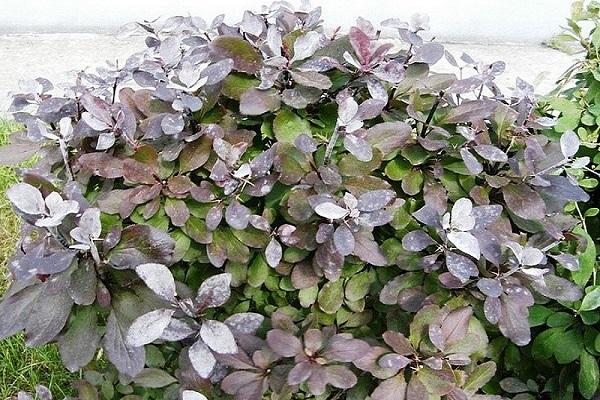
Bark necrosis
The defeat is characterized by the death of shoots, the formation of tubercles with spores that appear in the cracked bark. For treatment, cut off all diseased branches 15-17 cm further than the area of spread of the disease, burn. Spray the remaining branches with copper sulphate, and coat the cuts with garden varnish.
Shrinking stems
As a result of the disease, the bark is affected by fungal pathogens. Typical symptoms:
- the bark and crown dries out;
- branches die off.
Further spread can be stopped by cutting off diseased branches, spraying with a chemical or biological agent.
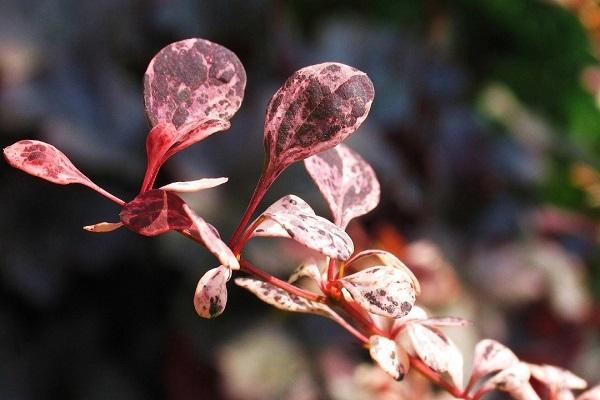
Bacteriosis
The bacterium pseudomonas provokes the development of a cancer-related disease. Typical symptoms:
- watery spots on the crown, shoots, cuttings;
- cracking of the bark, cancers;
- foliage dies off quickly;
- branches swell, and deposits of a brownish tint are formed.
To combat the disease, the affected branches are cut off, burned, the shrub is treated with a chemical agent.
Cancer diseases
Cancer lesions appear as:
- cones on the branches;
- cracks;
- rot.
Cancers are cleaned, treated with copper sulfate, chemical means (Fundazol, Bayleton). When the lower part of the plant is affected, it cannot be saved.
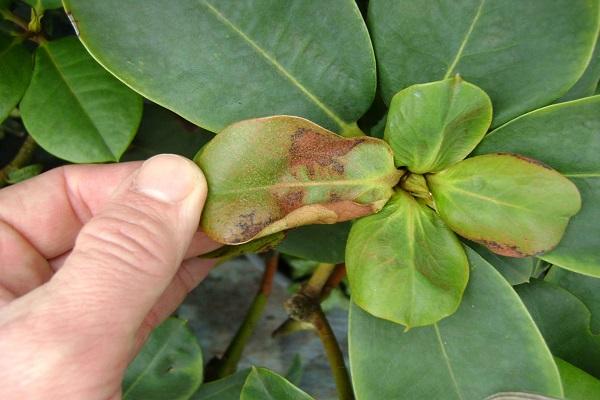
Withering barberry
With this disease, leaves and individual shoots wither, and on one side of the bush. Gradually, the leaves of the whole plant wither and curl. Darkened vascular rings are visible on the sections. The causative agent is a fungus from the genus Fusarium. Infection from the soil gets to the roots, decay occurs, the plant dries up.
Pests and how to protect the plant from them
The plant can wither, die, not only the one affected by the disease, it is often overcome by harmful insects. Vigilant examination, preventive measures will help to avoid such problems. Extermination of insects must be carried out at the initial stage, otherwise the shrub will be lost.
Caterpillars
Caterpillars of moths, moths, moths, barberry sawfly, scoop eat the foliage of the barberry, so it begins to fade, takes on a twisted appearance and dries up.
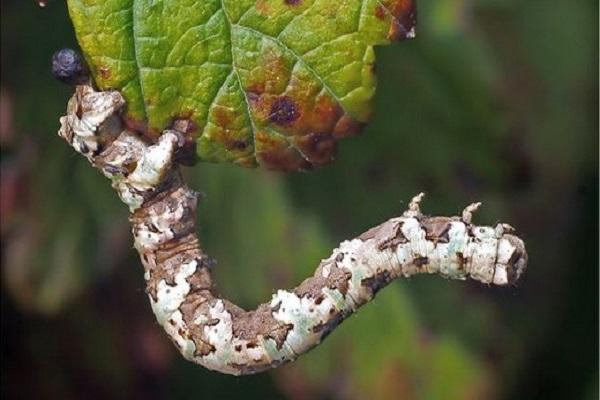
The fight against them is carried out with the help of chemical and biological products. Why is it important to spray at least 20 days before harvesting on fruiting bushes? The concentration of harmful substances in barberry fruits is reduced. Among the popular methods, fumigation, spraying with a decoction of chamomile, bitter wormwood are popular. It is important for sanitation purposes to prune the foliage.
Aphids on barberry
Aphids, worms, scale insects cause colossal damage to the plant. Insects suck out the juices of the bush, which leads to wilting and drying. An effective way to combat is spraying with products containing sulfur. In tandem, it is recommended to use folk methods: infusion of garlic, horse sorrel, potato tubers, dandelion, tobacco.
Mite
The mite produces swelling on the branches, deforming shoots and leaf plates. To exterminate the insect, treatment with anti-mite agents is performed. You can fix the result with infusion of cyclamen tubers, medical alcohol.

Preventive actions
Preventive measures will help to avoid damage to shrubs by diseases and pests.
These include:
- purchase, planting of high-quality, healthy plants;
- feed the shrub, apply the necessary fertilizers;
- correct watering;
- creating the necessary conditions conducive to strengthening the plant;
- thoroughly systematically examine the plant;
- make sanitary pruning by removing dry branches;
- fallen leaves, where pathogens hibernate, burn;
- make preventive spraying of the shrub during the growing season.
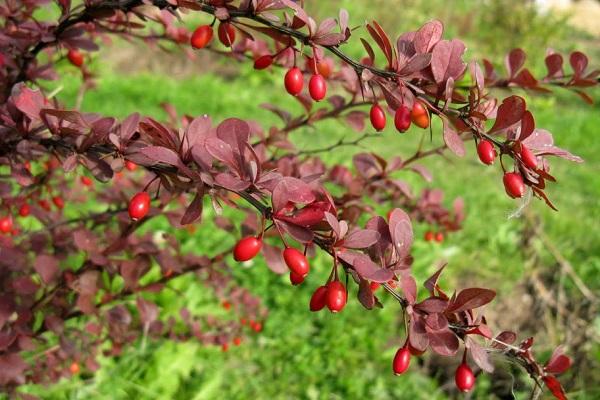
Rating of the best folk and store remedies
Today the chemical industry offers a large selection of biological products that are safe for humans and animals. Some of them can handle barberry until harvest. These include:
- Fitoverm is an insecticide used to kill insects: aphids, whiteflies, and other pests. It is used when they appear and again after 2 weeks.
- "Boverin" is an insecticidal biological product against insects, the shelf life is 2 months, after which it is not suitable for use.
- "Aktofit" - means for the destruction of insects on agricultural and ornamental plants. It is used as soon as it detects a pest infestation.
- "Bicol" - used to kill insects, effective against 80 types of pests.
- "Fito-Doctor" is a biological fungicide designed to combat harmful insects.
- "Mikosan" - is used to protect against fungi, viruses, bacteria. It is of natural origin, can be used during fruiting, is safe for people, animals, birds, bees, and enhances the plant's immunity.
- "Fitosporin" is a microbiological preparation, effective against fungal, bacterial diseases in any crops: flowers in the house, in the garden on trees, shrubs. It is used for any period of vegetation, flowering or fruiting.
- "Baktofit" is a biological preparation that effectively copes with fungal and bacterial infections of vegetables, cereals, flowers and ornamental plants. During processing, the formation of resistance in pathogenic bacteria does not occur, therefore, the processing is allowed to be carried out repeatedly until the result is obtained.
- "Alirin" is a biological fungicide for the elimination of fungal diseases in the soil, on plants, close in composition and action to "Fitosporin". The tool reduces the toxicity of the soil after the use of chemicals, restores the microflora, does not cause addiction to pathogens, and produces an immunomodulatory effect.
- Bordeaux liquid is a chemical that has proven itself in the fight against various fungal diseases. With a correctly calculated dosage, the drug will not harm the plant, people and animals, while effectively eliminating the fungus.
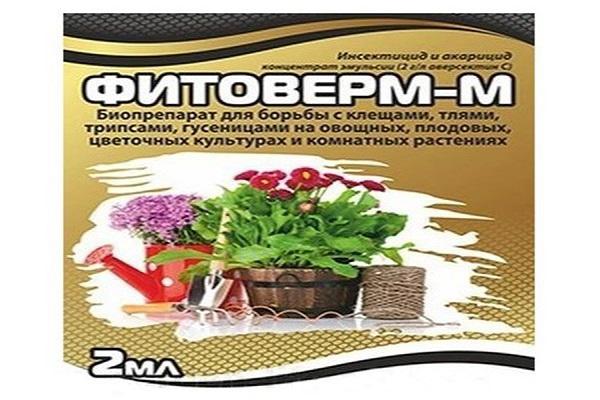
Some gardeners share advice on how to spray using safe folk remedies:
- decoction of tobacco: 450 g of makhorka pour 10 liters of boiling liquid, insist;
- decoction of potatoes: boil 2 kg of potato peelings, dilute in 10 liters of liquid;
- decoction of garlic: 650 g of garlic in 10 liters of boiling liquid.
If you add grated soap to the solution, the effect is enhanced.
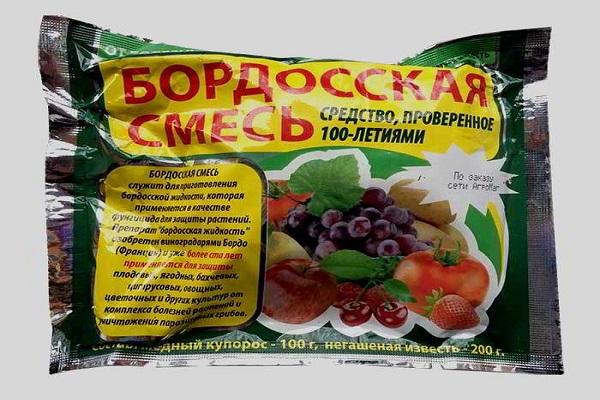
Terms and scheme of processing
Spraying is performed with Vectra, Skor, Cumulus preparations before and after the flowering process. With a strong development of the disease - in the fall, when the crop is harvested.
The optimal time for spring treatment with a mixture of urea and copper sulfate is when the average air temperature is above zero, and the buds are already swollen, but the leaves have not released. If the foliage has just appeared, you can also spray it, later it will be useless. In addition to pest control, nitrogen replenishment is performed. The plant enters the vegetative process faster, the flowering period shifts.
The elimination of pests is carried out as soon as they appear and again for prevention after 2 weeks.
The timing of processing by months is impossible to say for sure, since they depend on the climatic characteristics of the region, the weather conditions of a particular year.
